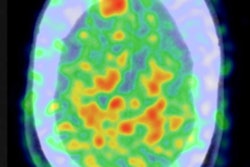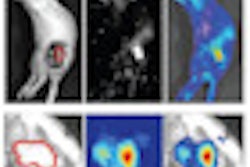A patient diagnosed with meningioma of the skull base can have several treatment options, all with known risks. Radiation therapy may be the more palatable option, according to a new study published in Radiotherapy and Oncology.
A German study of more than 500 patients who had undergone radiotherapy a median of nine years previously found that for the majority, their quality of life (QOL) had improved since treatment. Tumor control also was excellent, at 88% 10 years after treatment.
A meningioma is a tumor that develops from the meninges, the membrane that surrounds the brain and spinal cord. Most meningiomas are benign and slow growing; however, due to their location in the body, they may cause headaches, nausea, double vision, and trigeminal or facial nerve dysfunction. They may also cause exophthalmos, or bulging of the eyes (Radiother Oncol, August 20, 2012).
An observation-only strategy, monitoring the tumor with MRI, is appropriate when the meningioma is benign and the patient has no symptoms. There is no way to predict the rate of tumor growth; if it becomes aggressive, or when clinical signs and symptoms develop or worsen, the question becomes whether to treat with neurosurgical resection or radiotherapy.
Surgery has its drawbacks. Depending upon the location of the meningioma, the tumor may not be able to be completely removed. High rates of side effects also have been reported with surgical intervention.
Acute and long-term side effects have also been reported with radiation therapy. However, the precision of delivering radiation to a tumor and avoiding healthy tissue with intensity-modulated radiotherapy (IMRT) and fractionated stereotactic radiotherapy is believed to have reduced these effects.
For the current study, researchers at the University Hospital of Heidelberg sent a detailed questionnaire to 507 patients treated in the hospital's radiation oncology department or at the German Cancer Research Center in Heidelberg to evaluate QOL. These patients had been prospectively enrolled in a follow-up program, and of this group, 340, or 67%, responded to the questionnaire.
Treatment
The 507 patients received either fractionated stereotactic radiotherapy (74%) or IMRT (26%) between 1985 and 2010. Slightly more than half had undergone one or more surgical resection, and all but three had only partial resections or biopsies.
About one-third of the patients (28.6%) underwent radiotherapy following initial diagnosis. Nearly half (45.6%) had treatment after surgical resection, and the remainder (25.8%) received treatment only when the tumor progressed or clinical symptoms developed in a "watchful waiting" program. Patients received radiation doses of 25 Gy to 68 Gy in single fractions of 1.6 Gy to 5 Gy.
All patients were progressively followed for a median of 107 months but for as long as 20 years. Lead author Dr. Stephanie Combs, from the Neuro-Radiation Oncology Research Group, and colleagues reported that local control was 94% at five years after treatment and 88% at 10 years.
As might be expected, patients with low-grade meningiomas had a significantly better local control rate 10 years after treatment than patients with high-risk meningiomas, at 91% and 53%, respectively. None of the patients developed secondary malignancies in the brain or head and neck area, although five patients had developed another cancer that metastasized.
Survival was 90% at five years after radiotherapy and 82% at 10 years. The study did not determine which of the patients died of old age or comorbidities. The median age of the patients was 53, but it ranged from 16 to 83 years.
Quality-of-life outcomes
An unspecified number of patients experienced fatigue or alopecia during or immediately after radiotherapy; most improved over time. Approximately 38% reported that their quality of life improved, and only 4.2% said they felt worse after treatment. Fifty-five percent reported that radiotherapy did not change their quality of life at all.
The authors were pleased with all findings, noting that they support the premise that "radiation therapy has been established as a highly effective treatment alternative."
They hope the research will help offset concerns that radiation therapy might impair quality of life, especially in patients without prior neurosurgical resection. The outcomes from long-term patients could help dispel concerns that treatment-related signs and symptoms are induced over time, Combs and colleagues wrote.



















